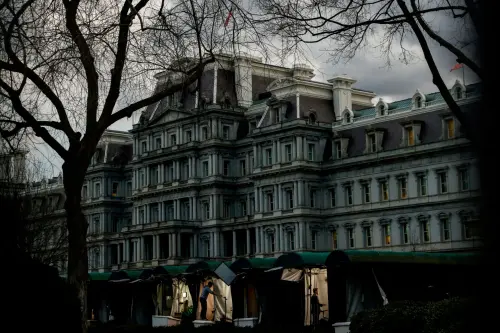President Zelenskiy can still turn things around and become the pro-reform, anti-corruption champion that he promised Ukrainian voters, but if he does not, he will most likely follow in the footsteps of Presidents Yushchenko and Poroshenko, who were ousted by Ukrainian voters after one term, argues Steven Pifer. This article originally appeared in the Kyiv Post.
Volodymyr Zelenskiy swept to victory in Ukraine’s spring 2019 presidential election because he promised renewed reform and a real fight against corruption.
Today, the reality looks quite different.
Zelenskiy has fired a reformist prime minister and cabinet, replaced a prosecutor general who had begun weeding out bad eggs among prosecutors, and triggered the resignation of a National Bank of Ukraine head who had won plaudits for steering an independent course. Speculation runs rampant in Kyiv that oligarchs are reasserting control.
Ukrainians can be forgiven for thinking they have seen this movie before. They have. Ukraine’s past 30 years are filled with episodes of rising hopes turning to disappointment. Zelenskiy should ask himself whether Ukraine and he personally can afford another one.
After winning the presidential election in July 1994, Leonid Kuchma appointed an economic team with strong reform credentials. That fall, he laid out a program to accelerate the transition to a market economy, liberalize prices, cut the tax rate, and slash the government’s budget deficit. In 1995, however, he reversed course. Lacking the critical mass of reforms that energized growth in Ukraine’s western neighbors, Ukraine’s economy weakly hobbled along.
Following his reelection in November 1999, Kuchma turned to Victor Yushchenko, a recognized reformer, to serve as prime minister. I recall hosting a Christmas holiday party in Kyiv the evening that the Verkhovna Rada, Ukraine’s parliament, confirmed Yushchenko; my Ukrainian guests were practically giddy with optimism. Unfortunately, those hopes turned to naught. By June 2000, the presidential administration and Yushchenko’s cabinet of ministers were at war with one another instead of working together for change. Less than a year later, the Rada voted Yushchenko out.
Yushchenko later had another turn, becoming president in January 2005 following the Orange Revolution. Many hoped he would finally get Ukraine on track to becoming a modern European state. He appointed as his prime minister Yuliya Tymoshenko, the most effective minister in his cabinet in 2000. Unfortunately, the two never got in sync on a reform program, and new infighting broke out between the presidential administration and cabinet of ministers. Things did not improve with new prime ministers or with Tymoshenko’s return to the job. Ukrainians became so dissatisfied with Yushchenko’s presidency that, in the January 2010 presidential election, he placed fifth, drawing a mere 5.45 percent of the vote.
In May 2014, in the aftermath of the Maidan Revolution, Petro Poroshenko won the presidential election on the first ballot, something that had not happened since 1991. He and his first prime minister, Arseniy Yatsenyuk, adopted early reforms. They cleaned up the government’s finances, introduced critical price reform at Naftogaz, put the banking sector on a solid footing, and secured a large International Monetary Fund program. But the pace of reform slowed in early 2016 after Poroshenko fired Yatsenyuk and other pro-reform ministers. By the summer, visitors to Kyiv could hear Ukrainians voice frustration over the failure—more than two years after the Maidan—to take real steps to reduce corruption and curb the outsized political and economic influence of the oligarchs.
Poroshenko and his political team apparently missed that rising disaffection. Campaigning on an anti-corruption message, Zelenskiy routed Poroshenko in the April 2019 presidential run-off, winning 73.2 percent of the vote.
This latest episode of hope-to-disappointment with Zelenskiy comes at a difficult time for Ukraine. Mired in a war with Russia, the Ukrainian president cannot bring peace to Donbas without Vladimir Putin’s help, but the Kremlin appears intent on continuing the conflict.
Reform and the struggle against corruption, however, are fights that Zelenskiy can control. If he turns away from them, he risks losing support in the West, particularly in Europe, where calls for a return to business as usual with Moscow are growing in EU member states. Zelenskiy should worry that, after 30 years of failure to rein in corruption and the oligarchs, Europeans may well begin to wonder whether Ukraine’s political elite is incapable of change. Few things would damage Ukraine more than if its friends in the West begin to question whether the country is worth the trouble—and simply give up.
If Zelenskiy does not worry about his country’s future, perhaps he should worry about his political prospects. Just thirteen months after assuming office, his approval rating plummeted to 38 percent in June, a far cry from the 71 percent he enjoyed last September. His apparent reversal on corruption and long-needed economic reforms undoubtedly contributed to that.
Zelenskiy can still turn things around and become the pro-reform, anti-corruption champion that he promised Ukrainian voters. Kyiv is full of reformers who can help him. However, if he does not change course, he most likely will follow in the footsteps of Yushchenko and Poroshenko — one-term presidents turned out by an electorate badly disillusioned with their failed promises.
The Brookings Institution is committed to quality, independence, and impact.
We are supported by a diverse array of funders. In line with our values and policies, each Brookings publication represents the sole views of its author(s).









Commentary
Ukraine’s Zelenskiy ran on a reform platform — Is he delivering?
July 22, 2020